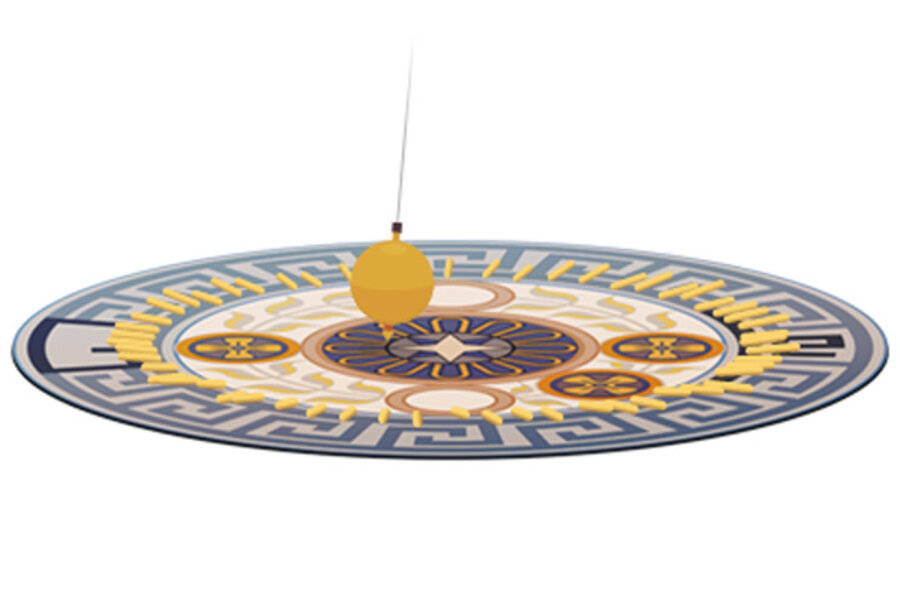How Léon Foucault taught us to watch the world spin
Loading...
It's easy to forget that while you read this article, you and your computer screen are racing through space at a nearly unimaginable speed. The Earth constantly rotates on its axis at 1,037 miles per hour, orbiting the sun at 67,000 m.p.h. And the solar system whips around the galaxy at more than 420,000 m.p.h.
Two centuries ago, it was difficult for scientists to model intricate planetary orbits. Léon Foucault helped devise a method to make celestial orbits a bit easier to understand.
Wednesday marks the 194th anniversary of the French physicist's birth. To celebrate Foucault and his breakthrough pendulum, let's take a look at how he was able to model Earth's rotation.
Jean Bernard Léon Foucault was born in Paris in 1819. While Foucault received a medical education, the profession did not quite suit him. The young doctor is said to have had a distaste for bloody medical dissections. But Foucault was brilliant when it came to making models, tools, and devices.
And Foucault's craftsmanship came in handy.
Foucault and a series of teachers, bosses, and partners tackled many scientific questions by building contraptions that could make hard-to-grasp phenomena more tangible. Foucault was able to measure the speed of light. He improved the daguerreotype, an early form of photography. He found a way to prove that light is a wave, not a beam of particles. He named the gyroscope, a stabilizing tool found in everything from toys to the International Space Station.
In 1851, Foucault conducted one of his best-remembered experiments: The scientist devised the first model to demonstrate the rotation of the Earth on its axis.
People had tried many different ways to explain Earth's rotation before Foucault. One group had even launched cannonballs up into the air with the hopes that the world would spin enough that they could measure the deviation once the ball plummeted back to earth. Compared with that loud, inaccurate (and dangerous) plan, Foucault's solution was remarkably elegant. He strung up a brass weight at the end of six-foot wire. The metal ball hung over a pile of damp sand, just close enough that the brass brushed against the sand as it swung slowly back and forth. At first, the pendulum simply carved a straight line in the sand. But over the course of several hours, the line turned into a bow-tie shape.
Newton's laws of motion state that an object will not change direction unless another force hits it. This means that while Foucault's pendulum kept swinging in the same direction, the Earth (and the sand on the ground) turned underneath it. It's as if you drew a line back and forth repeatedly on a piece of paper, but then slowly rotated the sheet as you kept drawing – eventually the lines would form a circle.
Foucault's experiment became a sensation. The French government even ordered a large-scale version that would hang inside the Pantheon in Paris, with a 219-foot, 61-pound pendulum suspended from the building's dome. Modern pendulums hang in the United Nations headquarters in New York, the California Academy of Sciences in San Francisco, the Boston Museum of Science, and many other locations.
Since Earth spins on an axis, each of these "Foucault pendulums" turns at a slightly different rate, demonstrating that different parts of the globe rotate at different speeds. At the North Pole, a Foucault pendulum would turn 15 degree per hour, making a full 360-degree circle each day, while in Paris, the pendulum would only turn about 11 degrees an hour, requiring 32.7 hours to make a complete round. On the Equator, the pendulum would not appear to spin at all.
In recognition of his many achievements, Foucault is among the 72 French engineers, scientists, and mathematicians whose names are engraved on the Eiffel Tower.
For more on how technology intersects daily life, follow Chris on Twitter @venturenaut.







